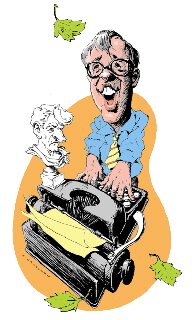Mortimer Chambers, Los Angeles
I first met Alan soon after I entered Harvard in spring 1947. I think he had just graduated from Harvard and I was in the class of ’49. We met as I was scouring record shops in Boston, for I was a long-time collector of classical records. He was working in a small shop, the J.G. Kaufman Company, and he broadcast commentary on records for the shop. “Here’s another fine recording I found at the J.G. Kaufman company…” I think he took a liking to me because I knew a great many of the album numbers for Victor records. He soon taught me how to slip into Symphony Hall to hear the Boston Symphony when they played afternoon concerts. You pretended that you were an usher, and we young men in our 20s could pass as such.
Alan sold me, for very little money, some shellac records, some of which I still have. Soon his parents invited me to a meal in the Brookline section of Boston. Alan and I went to some concerts in Boston. One was a recital by the Griller String Quartet. They announced an encore, an Andante from Haydn’s quartet in F major, Op. 3, no. 5, and as they were about to play it Alan whispered to me, “Also known as ‘Eighteenth century dance,’” this being the name that Victor records had given this movement as played by the Philadelphia Symphony Orchestra under Stokowski. I was really impressed.
My most memorable musical adventure with Alan came in 1948, when I went to New York to hear a recital by Arthur Schnabel, whom I worshiped. He played four sonatas including Beethoven’s last two, Opus 110 and 111, in Hunter College. Alan arranged for the tickets. On the way out he told me he had just spoken to B.H. Haggin, then the noted music writer for The Nation. Again I was impressed.
Alan’s most impressive narrative was of attending a Boston Symphony concert in spring 1945. The war was ending, and a news agency (Associated Press?) prematurely leaked the news that it was over. Serge Koussevitzky, the conductor of the symphony, came out to the podium and announced, wrongly, “The war is over!” Of course there was a stupendous uproar, which was followed by a performance of Beethoven’s ninth symphony, whose final movement set to music Schiller’s poem, the Ode to Joy. Alan described the euphoria – it must have been the Beethoven’s Ninth of all time.
Alan soon went to work as a representative for Cetra records, an Italian company, and he passed on to me one or two memorable discs (these were still 78-speed shellacs).
Then I left Harvard and for years didn’t hear of Alan, while I was working on my own academic career. Many years ago now he moved to Los Angeles and I heard of it. My wife and I invited him to dine. We saw each other only now and then, at musical events, and twice at his home on January 1, when he held open house. Even into his eighties Alan had tremendous energy and attended music events large and small in southern California. He sponsored new music such as the Jacaranda concerts in Santa Monica and was never content with nothing but Beethoven and Mozart. He could be an amusing curmudgeon at times. He did not wish to be called “the Haggin, or the Hanslick, of his times.”
He never got the job he should have had, chief music writer for the New York Times or the Los Angeles Times (he did write for the New York Herald Tribune, which folded soon after he joined it, and for journals like New York and The American Scholar). I had long told him of my wish that he should collect a large selection of his essays, and he finally did so in an inexhaustible book, “So I’ve Heard,” and this became the title of his blog, when the journals he wrote for (LA Today, I believe, and others) closed one after another.
His long experience and his scholarship made him the most eminent writer on music in America. One saw him sitting in his usual seat in Walt Disney Concert Hall and waited for his evaluation, always written with the style he had developed at Harvard. We who love music wonder how we can get along without him.

